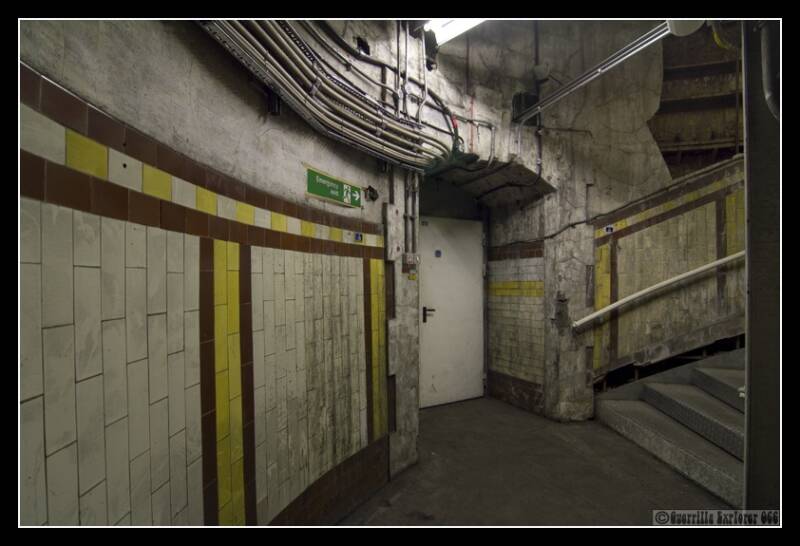GES137 - Hyde Park Corner Sub Station/Old Station Steps
The world of Metro exploration is a multi-faceted place, it's not just about ghost stations, linking tunnels, vent shafts and disused tunnels. There are also other places to provide adventure and discovery for the determined explorer. Sub-Stations are one of them. They regulate the electricity that go into the network at various points along each line. So maybe 5 stations are controlled from one sub-station. They take the power from the grid, and send it down to the tracks. The tracks carry the power for the trains, but also electricity for station infrastructure, such as lifts and escalators.
There used to be a station here, and some of the elements remain, like the stairwell and some passages. This is how the station once looked, it's now all underground as of the 1930s expansion programme on a number of stations on the Piccadilly line. Image from London Transport

Getting in proved to be an adventure in itself, using quite the ingenious method. Once in we were met with an array of tall grey metal cabinets. I was quite surprised/pleased to see one such cabinet made by the English Electric company, as they made the wonderful Lightning Jet I admired as a kid. The company sadly disappeared into mergers and oblivion from the 60's onwards.

Does exactly what it says on the diagram.

English Electric merged with GEC in 1968, also now defunct, so more examples of British manufacturing hidden away from public view. Unlike my hifi and microwave from Japan, it's still working. The Cromwell Curve was mentioned several times down here, and it refers to a section of track near Gloucester Rd station, that runs close to the Cromwell Rd, the A4 going into central London.

Looking down to the lower floor of the substation. Behind the camera is a crane, which may explain the open area here.

Stairs down to the lower section of the sub-station.

One of the rows of transformers. As explained above, the power going through the rails also powers station infrastructure. So the names on the plates show where the power is going, even 2 miles away to Leicester Sq.

A section gives way to a ladder down below. Although no access for normally proportioned humans.

Luckily it was possible to get access to another prize for the night, the remnants of the old Hyde Park Corner station. There wasn't much left, just the stairs that go to an emergency exit, and behind the camera a blocked off passage. The door is thought to lead directly onto the platforms of the new Hyde Park Corner station.

A walled up section of the old station at the bottom of the stairs, pipe ninja doing his thang!

In the core of the spiral stairs to the surface was this oddity. Luckily for such a dangerous shaft, the door had been left ajar. So it would be rude not to have a look at the deep shaft.

The deep shaft turned out to only be about 2 metres down. A mere chain (replaced for effect in this photo) to prevent also certain possible but not actually, doom). It was very weird being in a metal tube.

At the bottom of the ladder was a short set of stairs that lead into this passage, maybe 15-20m long at most. Behind the stairs in the pic below was an empty small room.

There was also this ladder, which turned out to be the one from the sub-station above.

The far end of the short tunnel in sight. The tunnel ended with a metre long ladder into a lower section filled with cables. We opted not to go any further as they were submerged in water. The passage was around 1.4m in height, and disappeared under a bit of air-conditioning duct that appeared built into what would have been a continuation of this tunnel below. Not wanting to step into the 50cm deep water with high voltage cables in. We had reached the end of our adventure here.

A last look around the sub station at the interesting names and dials on the equipment, and it was out the door.

Cheers to Kev for research and company as always.
Add comment
Comments